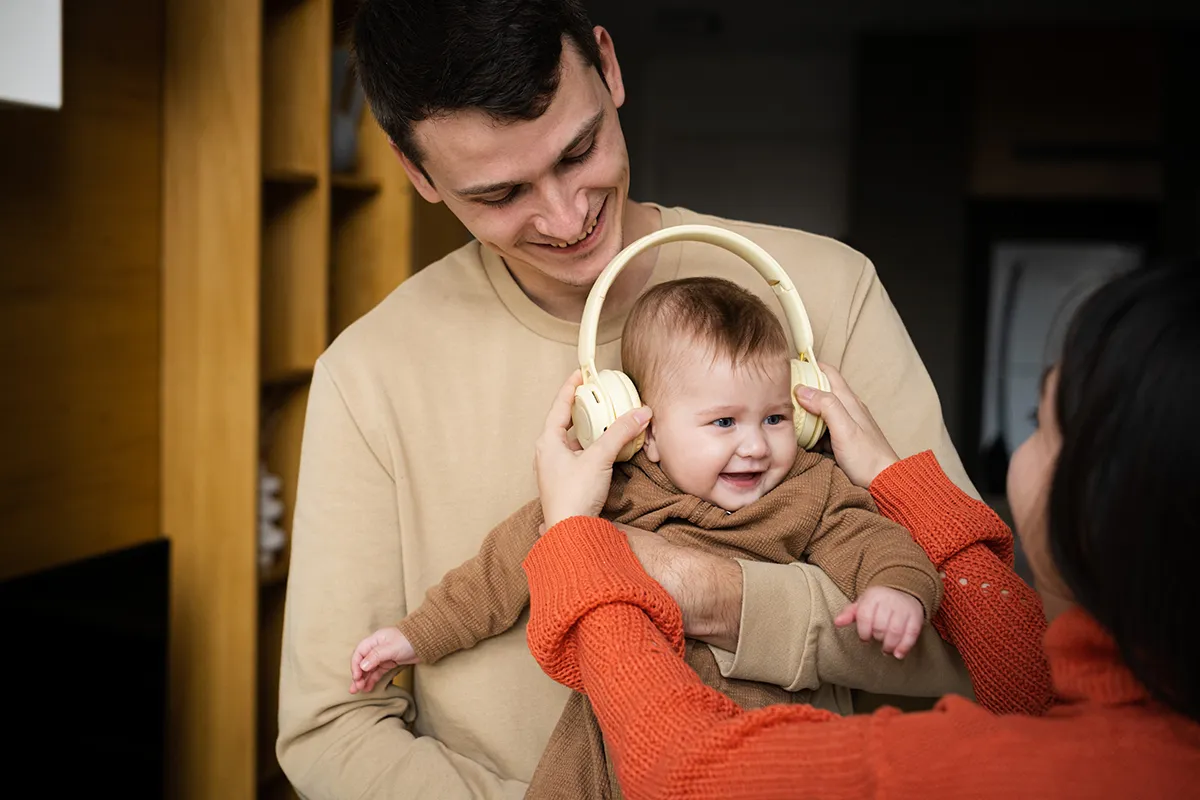Pediatric Hearing Loss

Though hearing loss can be a challenge at any age, pediatric (childhood) hearing loss comes with extra consequences. Hearing is crucial for language development and participating in a wide variety of other developmental activities. If not recognized and treated promptly, hearing loss in babies, toddlers, and young children can lead to language comprehension delays and difficulties in speech development.
What causes hearing loss in children?
Noise-induced sensorineural hearing loss
Pediatric hearing loss encompasses a range of conditions. Concerningly, an increasing number of babies, toddlers, and children are experiencing noise-induced hearing loss. This is caused by prolonged exposure to excessively loud noises and is unfortunately irreversible. Sources of excessive noise for babies and young children include:
- Toys that make sounds
- Concerts, including those catering for children
- White noise machines
- Listening to music on a personal device, at a concert, or in a music class at school
- Sporting events
- Movies
- Gaming arcades
- Noisy appliances, such as a hair dryer or blender
Congenital hearing loss
Some babies are born with a hearing impairment. More than half of congenital hearing loss cases are due to a genetic disorder, the most common of these being a condition known as GJB2-related autosomal recessive non-syndromic hearing loss. Certain genetic syndromes such as Pendred, Usher, and Waardenberg syndromes are associated with hearing loss, too.
If a mother is exposed to an infection during her pregnancy and this infection is passed on to her baby in the womb, this can result in hearing impairment. The most common non-genetic congenital cause of hearing loss is a cytomegalovirus (CMV) infection, which contributes to up to 40% of these cases of hearing impairment in babies. Other infections during pregnancy causing congenital hearing loss include toxoplasmosis, rubella, and herpes.
Ear infections
Children with their narrow and horizontal eustachian tubes are particularly susceptible to ear infections. A middle ear infection (otitis media) is the most common cause of non-congenital hearing loss in children, but fortunately each episode is treatable and temporary, unlike congenital causes.
Some systemic infections such as bacterial meningitis, measles, and mumps are strongly associated with hearing loss. The impairment from these infections is not always recoverable, but preventing the infection in the first place is often possible through immunization.
Ear wax impaction
Earwax is an important and necessary part of ear health. It helps to trap and remove dirt and debris in the ear canal, and is also thought to have some protective antimicrobial properties. Earwax generally makes its way out of the opening of the ear canal on its own as the jaw moves through speaking and chewing. However, in some children (and adults), it can accumulate and cause problems, a condition known as cerumen impaction. This causes a literal blockage in the ear canal, which may result in hearing loss.
Other causes
Other causes of hearing loss in children include a cholesteatoma (a non-cancerous overgrowth of skin cells in the middle ear), trauma, and otosclerosis (abnormal bone growth in the middle ear).
Signs of hearing loss in young children
While an older child or a teenager can more articulately describe problems with their hearing, hearing loss in babies or younger children often rely on their parents noticing abnormal behaviors. Most babies are offered a neonatal hearing screening at the hospital soon after birth, but a clear result on this test doesn’t mean the hearing loss may not develop later.
Signs of a hearing problem in young children include:
- Not reacting to responding to faint or soft sounds
- Not being startled by loud, sudden noises at 1 month
- Not looking for the source of a sound by 3-4 months old
- Failing to meet speech milestones, such as having at least one word by 12-15 months old
- Preferring to make sounds that produce vibrations, such as gurgling or blowing bubbles, rather than playing with vowel and consonant sounds
Management of pediatric hearing loss
Treatment depends on the underlying cause of the hearing impairment. Middle ear infections in young children are often recurrent and may need the insertion of tiny shunts called grommets to help the middle ear to drain excess fluid. The impact of accumulated earwax can be managed by having the child’s ear canal cleaned out by a Berger Henry ENT doctor – never insert an object into the ear canal to try and clear it out at home.
Noise-induced hearing loss is typically preventable by being aware of sources of excessive noise exposure. If the source can’t be removed or the volume turned down, consider hearing protection with earmuffs or ear plugs that have been properly fitted. If using earbuds or headphones to listen to sound on a device, consider purchasing a pair with a maximum decibel volume of 80dB.
For children affected by congenital hearing loss or hearing loss that cannot be cured, hearing aids may be considered to improve hearing and the chances of normal language development. If the hearing loss is severe to profound, a cochlear implant may be more effective.